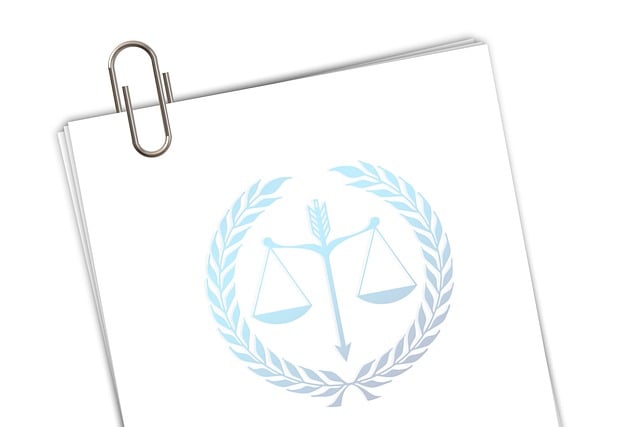The Sentencing Guidelines for White Collar Crime play a pivotal role in managing risks associated with complex, non-violent offenses like fraud, money laundering, and corruption. These guidelines provide a transparent and fair framework for prosecutors and judges, offering structured direction on sentence length and conditions. By adhering to these guidelines, organizations can mitigate legal risks, foster compliance culture, and ensure fair treatment for defendants while preventing and deterring white-collar crime.
Litigation risk management is a critical component of any successful organization’s legal strategy, especially in navigating the complex landscape of white-collar crime. This article delves into key aspects of managing these risks, focusing on understanding white-collar crime and its profound impact. It explores how sentencing guidelines play a pivotal role in risk mitigation and offers practical strategies to minimize litigation exposure. Additionally, best practices for preventing white-collar crime are highlighted, emphasizing proactive measures for effective risk management.
- Understanding White Collar Crime and Its Impact
- The Role of Sentencing Guidelines in Risk Management
- Strategies for Mitigating Litigation Risks
- Best Practices for Effective White Collar Crime Prevention
Understanding White Collar Crime and Its Impact

White-collar crime, often characterized by sophisticated schemes and lack of physical violence, encompasses a wide range of illegal activities committed for financial gain or personal enrichment. These crimes can have profound impacts on individuals, businesses, and even entire philanthropic and political communities. From fraud and embezzlement to money laundering and corruption, they erode trust, disrupt economic stability, and undermine the rule of law. Understanding these offenses is crucial in navigating the complex landscape of litigation risk management.
The Sentencing Guidelines for White Collar Crime play a pivotal role in shaping legal strategies and outcomes. These guidelines consider various factors, including the complexity of the offense, the level of planning involved, and the extent of harm caused. By understanding all stages of the investigative and enforcement process, legal teams can devise winning challenging defense verdicts, ensuring their clients receive fair treatment while mitigating potential liabilities.
The Role of Sentencing Guidelines in Risk Management

The Sentencing Guidelines for White Collar Crime play a pivotal role in Litigation Risk Management. These guidelines provide a structured framework that helps to mitigate potential risks associated with legal proceedings, particularly in complex and high-stakes white-collar cases. By offering clear direction on sentence length and conditions based on specific offenses and circumstances, they enhance transparency and fairness throughout all stages of the investigative and enforcement process. This, in turn, fosters trust among stakeholders, including employees, investors, and regulatory bodies, thereby strengthening compliance culture within respective businesses.
Moreover, effective use of sentencing guidelines can lead to achieving extraordinary results for both prosecutors and defendants. Prosecutors benefit from a consistent approach that allows them to pursue justice while considering the unique nuances of each case. Defendants, on the other hand, gain the assurance that sentences are meted out based on clearly defined criteria, reducing the risk of disproportionate or arbitrary punishments. This balanced approach not only enhances procedural fairness but also encourages cooperation and remorse, ultimately contributing to more effective crime prevention.
Strategies for Mitigating Litigation Risks

In the realm of litigation risk management, particularly for white-collar crime cases, a robust strategy is essential to navigate complex legal landscapes and avoid unfavorable outcomes. One effective approach involves understanding and adhering to sentencing guidelines designed for such offenses. These guidelines, often detailed in legal documents like the Sentencing Guidelines for White Collar Crime, provide a framework for judges to determine penalties, offering clarity and potential predictability in the face of significant legal challenges. By carefully navigating these guidelines, organizations can mitigate risks, ensuring they receive fair treatment while avoiding harsh sentences.
Additionally, building strong defenses through comprehensive risk assessment and early identification of potential issues is key. This includes evaluating evidence, challenging the prosecution’s case, and leveraging legal loopholes to avoid indictment. Such proactive measures not only enhance the chances of winning challenging defense verdicts but also foster a culture of compliance within philanthropic and political communities, ensuring their integrity remains intact.
Best Practices for Effective White Collar Crime Prevention

Preventing white collar crime is a multifaceted approach that involves robust internal controls, employee training, and adherence to regulatory frameworks. Organizations should establish clear policies and procedures that delineate acceptable conduct and define potential risks. Regular reviews of these policies are crucial to adapt to evolving criminal tactics. Additionally, implementing strong internal audit functions allows for continuous monitoring and identification of vulnerabilities.
Compliance with sentencing guidelines for white collar crime is paramount. These guidelines not only ensure fairness in punishment but also serve as a deterrent. Organizations must foster a culture of ethical conduct by promoting transparency and accountability. Engaging the philanthropic and political communities in advocacy efforts can further strengthen prevention strategies, emphasizing the societal impact of such crimes. Effective general criminal defense involves proactive measures to identify and mitigate risks specific to each respective business.
Effective litigation risk management in white-collar crime cases involves a multifaceted approach. By understanding the nuances of these crimes and their significant impact, organizations can implement robust strategies to mitigate risks. Utilizing sentencing guidelines as a tool, coupled with best practices in prevention, ensures a proactive stance against potential legal pitfalls. This comprehensive approach not only enhances an entity’s resilience but also underscores its commitment to ethical conduct and regulatory compliance in the face of evolving legal landscapes.






